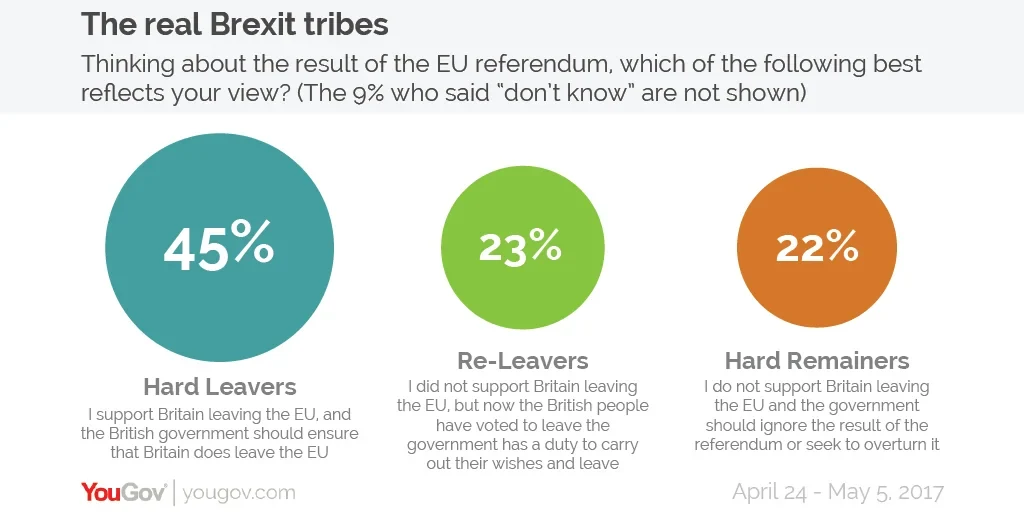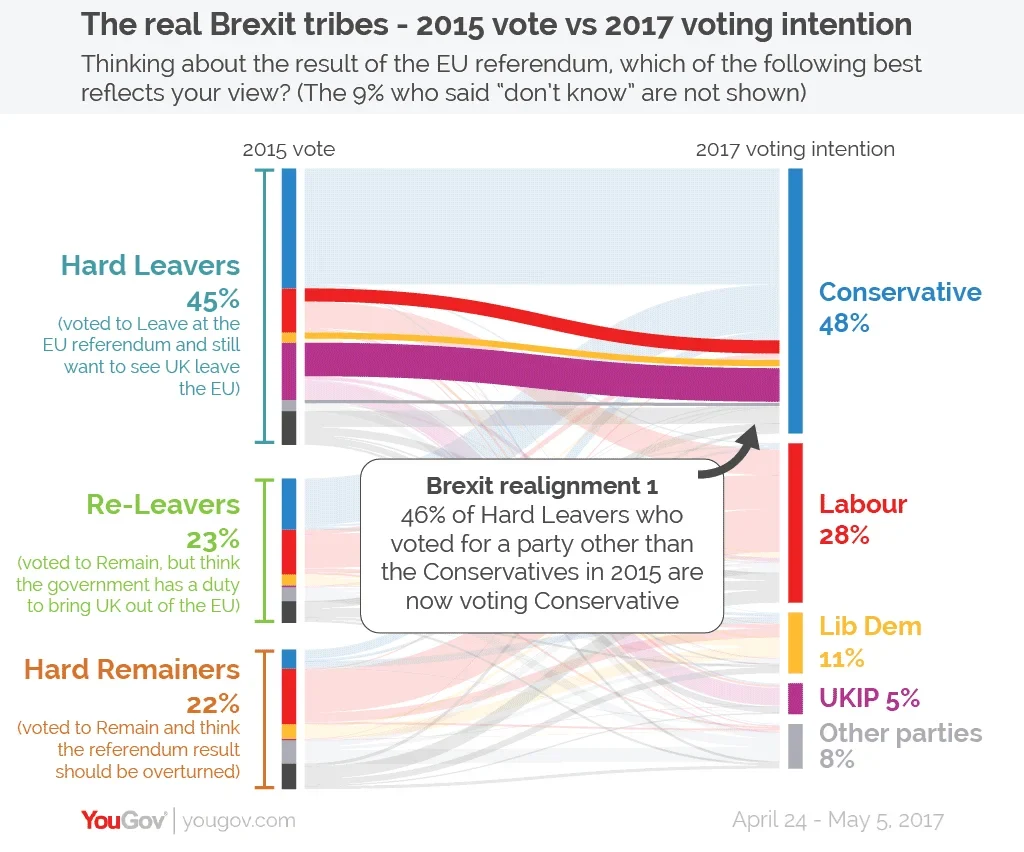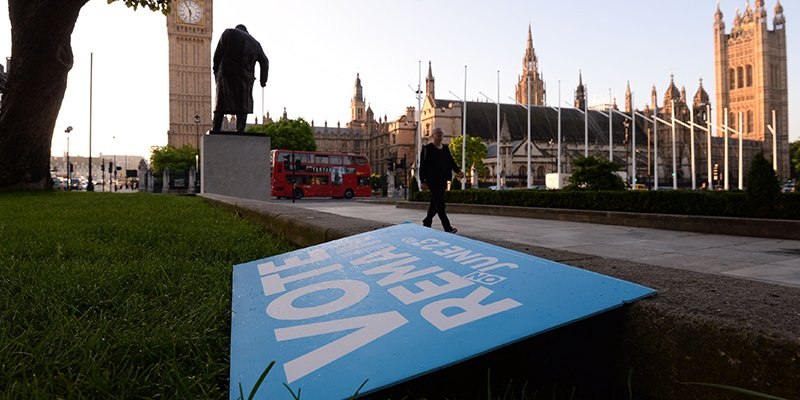While the EU referendum result may have ended up 52/48, post-referendum politics have settled into something far less evenly balanced. The rise of the “Re-Leavers” – those who voted to Remain in the EU but think that the government has a duty to leave – mean that the Conservatives are fishing in a massive lake, while the other parties are casting their rods into a pond
In the eleven months since the EU referendum, it has become a common theme that we are now a nation divided – 52/48. However, while it is true that most people still think they voted the right way last June, when it comes to the composition of the Brexit tribes in the general election, it is not a simple as “Leave” and “Remain”.
There is a third group who change the dynamics of EU-related arguments – the “Re-Leavers.” These are people who voted to Remain in the EU and many still think that leaving was the wrong decision, but crucially now believe the government has a duty to carry out the will of the British people.
When taking this into account, we can split the country into three groups instead of two: The Hard Leavers who want out of the EU (45%); the Hard Remainers who still want to try to stop Brexit (22%); and the Re-Leavers (23%). The other 9% don’t know.
This group means that when discussing Brexit and its implications in the campaign the electorate is not two pools of voters split almost down the middle 52/48. Instead, it is instead one massive lake made up of Leave and Re-Leave voters and one much smaller Remain pond. This means that the Conservatives and UKIP are fishing among 68% of voters with Labour, the Liberal Democrats, Greens and nationalists scrapping for just 22% of voters.

In this three way split, the fight for votes takes on a slightly different form. Amongst Hard Remainers, the Conservatives receive just 10% of the vote and are behind both Labour and the Liberal Democrats. Among Hard Leavers the situation is reversed, with over seven in ten (71%) planning on voting Conservative. When it comes to the Re-Leavers, the Tories secure 45% of the vote and have a 10% lead over Labour.
This suggests that people’s voting intentions aren’t being driven merely by the binary choice they faced in last year’s referendum. Instead, the choice is being informed by how they now feel the country should proceed with leaving the EU and it seems to be having a real influence on how the parties are performing in the polls.
The most obvious beneficiary of this three-way split is the Conservative party and it shows why it is entering landslide territory. Theresa May sweeping up the support of Leavers as the Tories consolidate their position among their own past voters and pick up the support of many 2015 UKIP backers.
But the strong Conservative position on Brexit has not just won it the backing of those that voted to Leave, it has also managed to siphon off extra votes from the Re-Leavers, boosting its support in this group by 2% since the last election. Among the 68% of the electorate that are Leavers or Re-Leavers, Theresa May’s party is picking up the backing of over six in ten. Because of its strength here, it matters a lot less that they are losing voters amongst Hard Remainers, which only accounts for 22% of the electorate.

It also partially helps to explain the struggles Labour and the Liberal Democrats are facing. Many see Labour as having a somewhat opaque stance on Brexit, which no doubt has contributed to the party losing 3% of its support among Re-Leavers. This is turn has made it more reliant on making gains with Hard Remainers, where they are competing against the Liberal Democrats, Greens, SNP and Plaid Cymru.
The Hard Remain/Re-Leave split also shines a spotlight on why the Liberal Democrats have struggled to make a breakthrough despite what, on the surface, look like favourable conditions. Although the party’s has increased its support since the2015 election, it has not seen the rise in vote share that many expected, and it actually lost seats at last week’s local elections.
While their post-referendum stance of a second referendum is designed to appeal to “the 48%”, the role of the Re-Leavers means that it is instead trying to woo just 22% - the Hard Remainer section of the electorate – where it too is competing for support among a range of other parties.
Simply put, Theresa May is fishing in a massive lake of voters with very little competition. Meanwhile the other parties are splitting the Hard Remain vote among themselves, something that in the first past the post system only serves to make the Conservatives an even more formidable electoral machine.
An edited version of this article originally appeared in the Financial Times
Photo: PA









